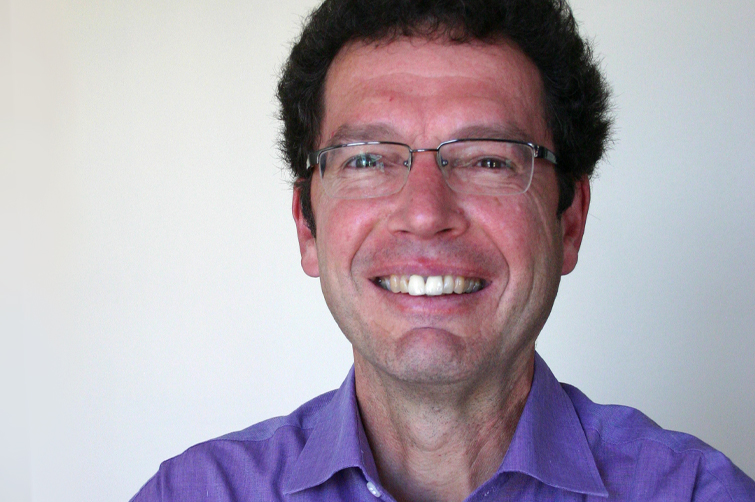31 August 2020
|
Story André Damons
|
Photo Supplied
 Prof Ivan Turok
Prof Ivan Turok
The number of people infected by the coronavirus is linked to the density of urban living. South Africa’s townships and informal settlements are bearing the brunt of the disease, on top of all their existing problems of unemployment, poverty, hunger, and crime. This is a disturbing situation and demands greater attention across society.
This is according to Prof Ivan Turok from the Human Sciences Research Council (HSRC), the Department of Economics and Finance, and the Centre for Development Support at the University of the Free State (UFS), who has recently been awarded a Research Chair in City-Region Economies at the UFS by the South African Research Chairs Initiative (SARChI).
Prof Turok was part of a webinar discussion on ‘Urban Living Post-COVID-19’ with Dr Geci Karuri-Sebina – who manages the research programme at South African Cities Network and who has two decades’ experience working and publishing in the fields of urban development, innovation, and foresight – and Mr Thireshen Govender, architect and founder of UrbanWorks. They analysed how COVID-19 challenges urban living, social distancing, and the de-densification of cities as South Africa heads towards 70% of its population living in urban areas.
According to Prof Turok, urban density has been blamed for the spread of the virus. “The fear of people crowding together has caused negative reactions from government, from business, and from households. This is unlikely to be a short-lived, temporary phenomenon. It will be with us for some time to come.”
“The virus poses an ongoing risk to society, with the prospect of second and third waves taking hold. A lockdown could be re-imposed and further efforts could be made to enforce distancing and de-densification of cities, particularly our densest settlements,” said Prof Turok.
De-risking urban density
There was a simple but compelling idea at the heart of his presentation, which should also be “at the heart of a more effective and inclusive response to the pandemic”. At the moment, the government’s response to the crisis facing our poorest communities is uninspiring. “We need a more positive vision for the future than wearing masks and washing our hands.”
“We need to be bolder and more imaginative about de-risking urban density. In other words, making crowded neighbourhoods safer and more secure for people to live in. Density poses multiple risks to residents. How do we reduce these risks in ways that generate wider benefits, rather than business as usual – forcing people to change their behaviour and follow protocols?”
With reference to New York, which was severely affected by the virus, Prof Turok showed that it was not density per se that was the problem, but rather the type of density. The densest part of the city (Manhattan) was far less affected by the virus than poorer outlying communities. “This gives us a clue that more floor space in taller buildings helps to prevent crowding and makes density more liveable,” said Prof Turok.
The reality in South Africa is also different when you drill down and distinguish between different kinds of places. Big cities have been affected worse than towns and rural areas – in terms of the incidence of infections and the number of deaths. Within cities, there have been far more problems in the townships and informal settlements than in the suburbs. In Cape Town, for example, the southern and northern suburbs and the central city have been barely affected by the virus. However, infections have been very high on the Cape Flats, including Khayelitsha, Langa, Gugulethu, Philippi, and Mitchells Plain.
“Population densities in some of these areas are more than 100 times higher than in the affluent suburbs. The differences are very striking.”
“Incomes on the Cape Flats are also much lower than elsewhere in the city. So, there is a correspondence between density and the disease, unlike New York,” says Prof Turok.
All the discussions about the pandemic so far has focused on the negative aspects of urban density for the risk of transmission. This ignores all the benefits of dense urban living. Intense human interaction fosters learning and creativity, which raises productivity and innovation. Concentrated populations generate economies of scale in the provision of infrastructure and institutions such as universities. Cities give firms greater choice of workers and vice versa.
Pure population density and economic density
Prof Turok continued by saying that physical distancing can be socially and economically damaging. “Attempts to force people apart through de-densification undermine all kinds of personal networks, weaken the social fabric of communities, and erode the economic advantages of proximity that are so important for cities.”
“We need to understand that people crowding together in dense informal settlements is a symptom of something more fundamental, namely poverty. The pressure on land reflects the fact that low-income households can’t afford the space standards of middle- and upper-income groups. Forcing people apart (or to stay home) to reduce the risk of transmission just treats the symptoms of the problem. It cannot be a lasting solution. It doesn’t build resilience to confront the multiple challenges facing poor communities,” said Prof Turok.
A key part of a lasting solution can be summed up as building economic density. This involves increasing investment in two- or three-storey buildings to give people more living space and to free up land at ground-floor level to accommodate essential infrastructure and more public space for markets and social interaction. A better living and working environment would strengthen community resilience to public-health problems and promote all-round development. The idea of economic density offers a practical vision that can inspire hope in a better future, rather than the status quo of wearing masks in crowded places.
“We need to de-risk urban density through tangible investment, rather than forced distancing or dispersal. This will help to bring about far-reaching improvements to people’s lives in cities. At the moment, the lack of economic density in impoverished communities is a much bigger problem than excessive population densities.”